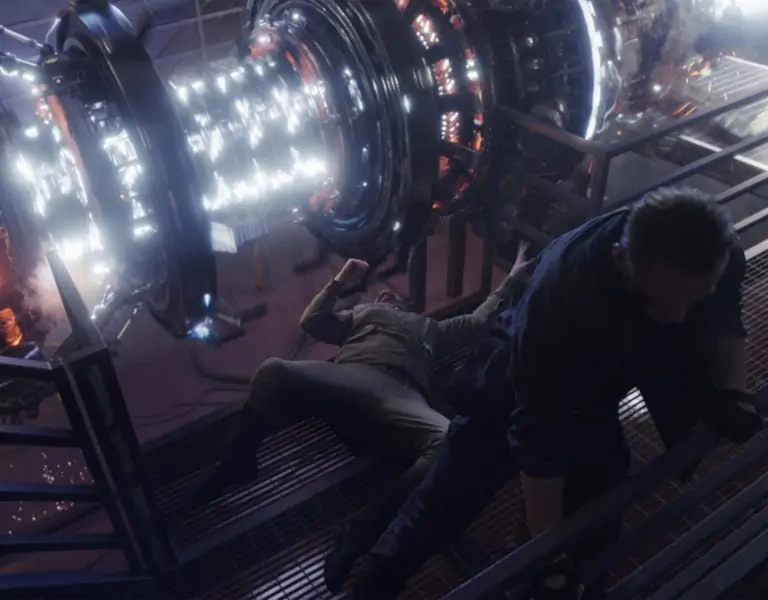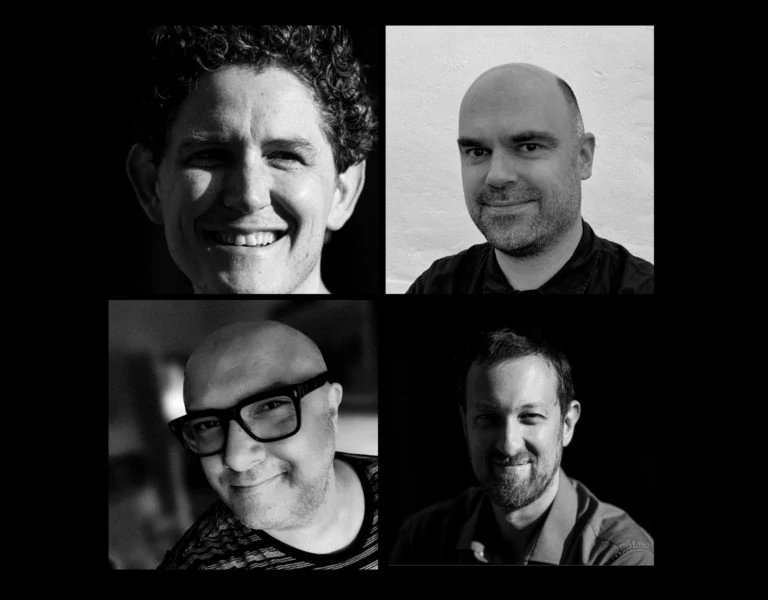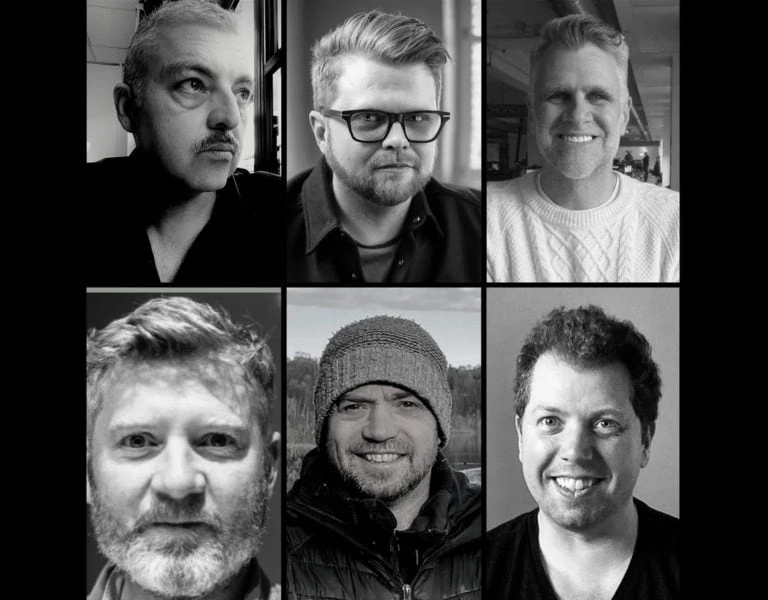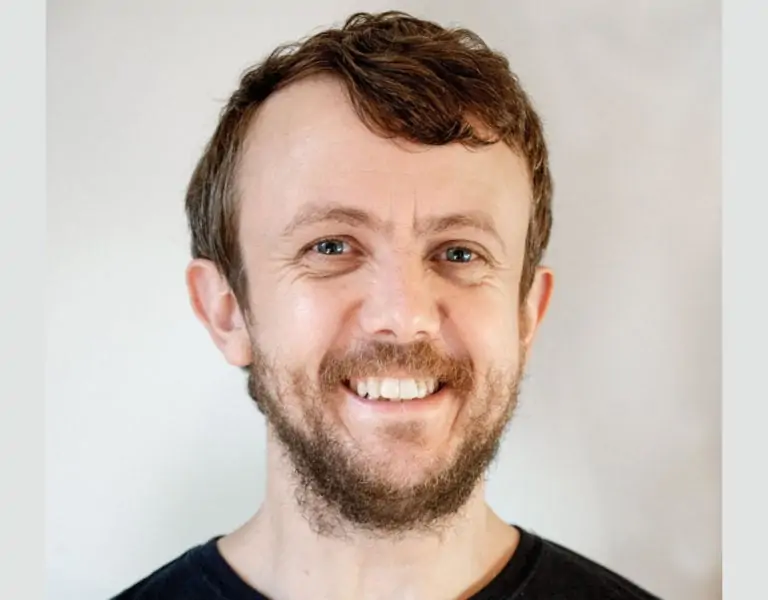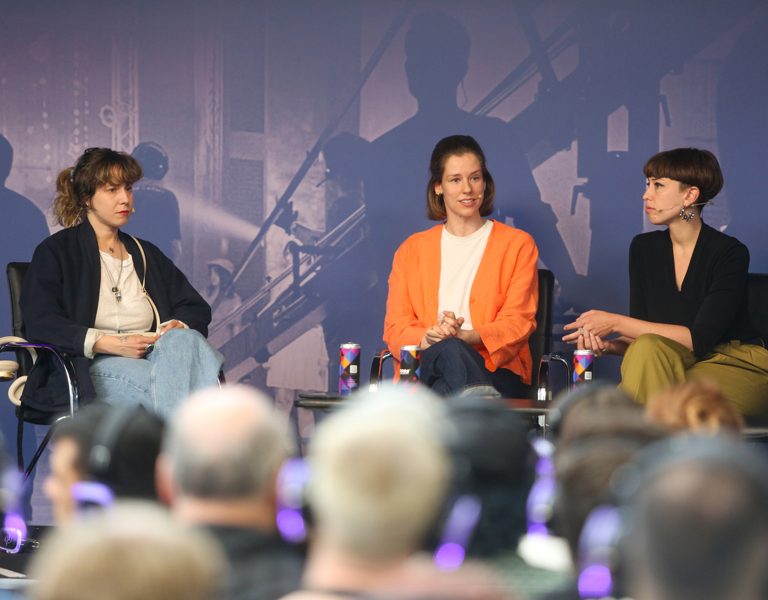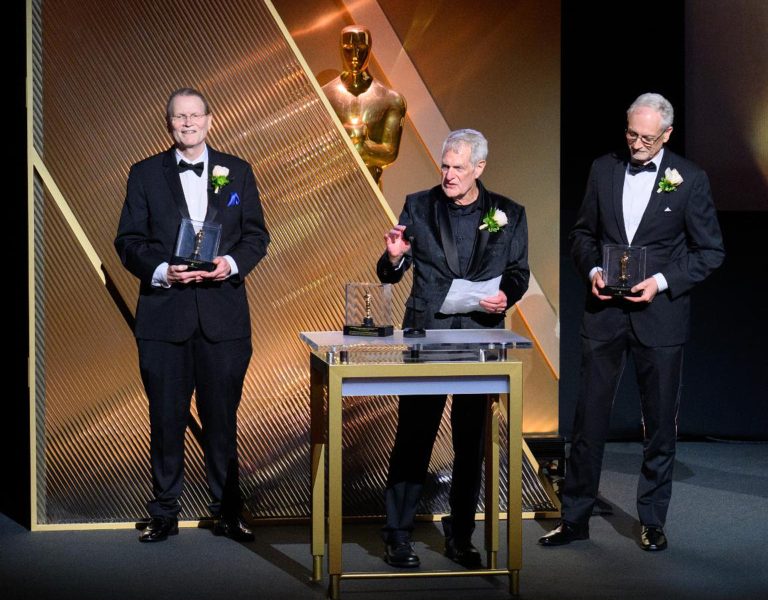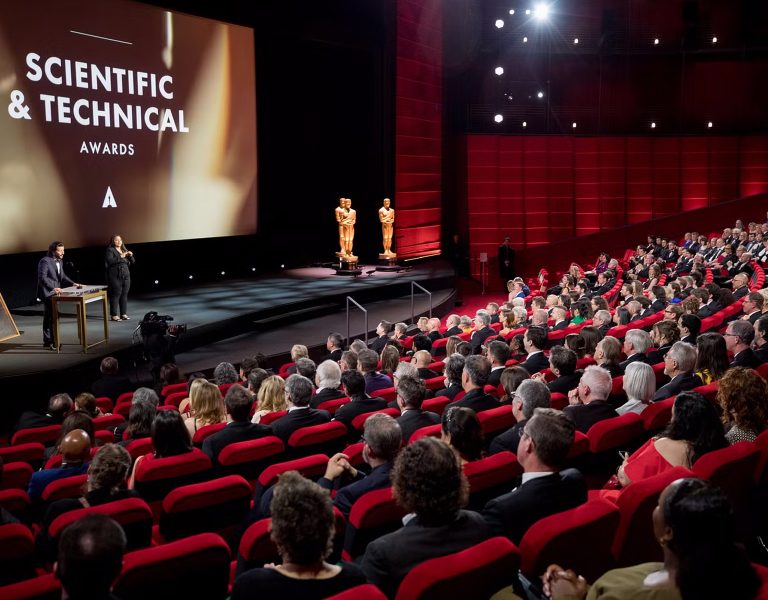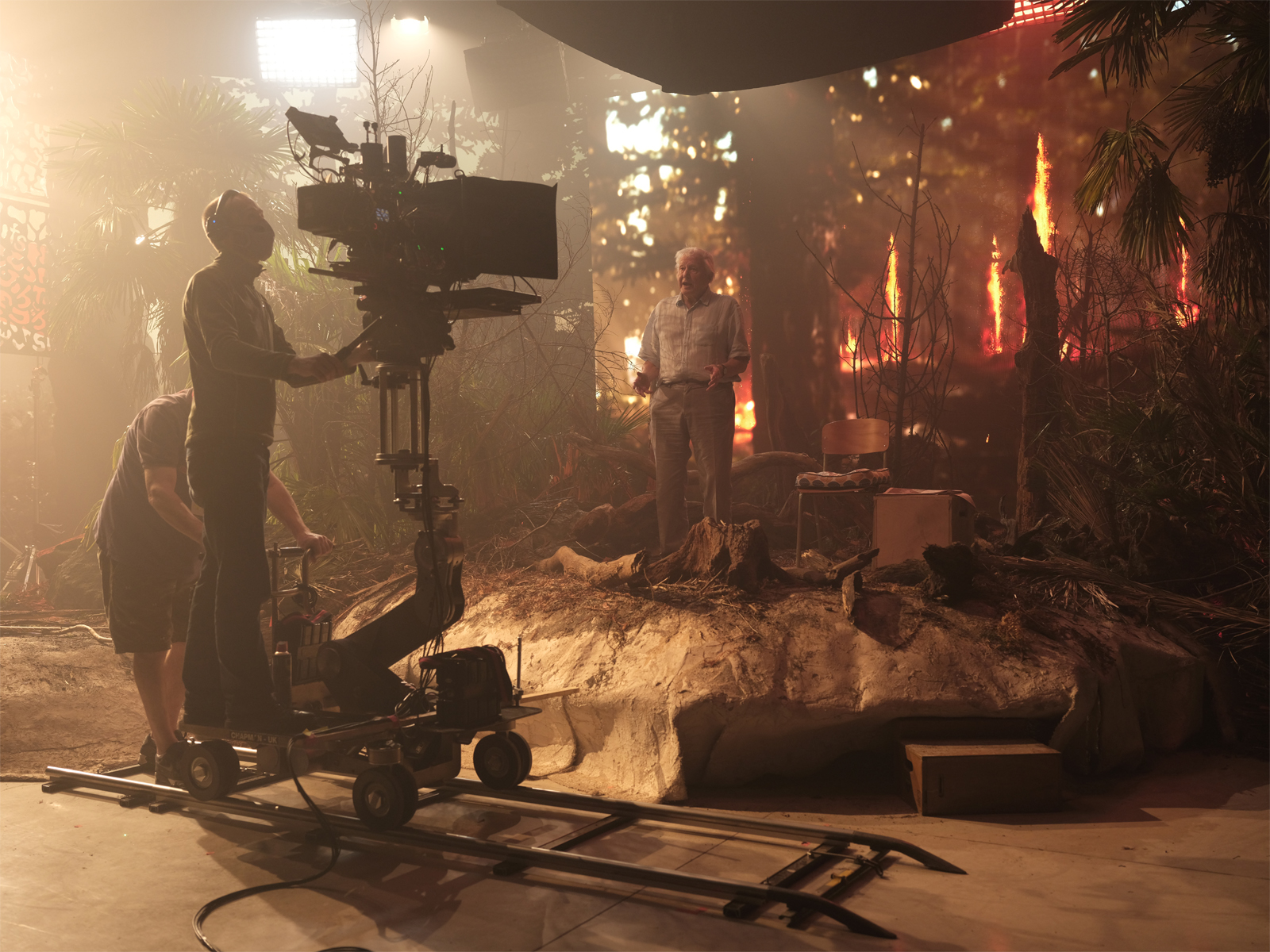
The BBC Studios Science Unit stunningly recreates the fall of the dinosaurs in unprecedented detail for a new documentary with David Attenborough that showcases virtual production technologies and never-before-seen visual effects to reveal what happened on the last day of the Cretaceous Period.
The documentary also tests audiences pre-conceived ideas of what dinosaurs may have sounded like based on information about the creatures’ anatomies.
Utilising a Virtual Production Studio, pioneered in Disney’s The Mandalorian, the new technology allowed BBC Studios to immerse Attenborough in a virtual world with a backdrop that reacts to the movement of the camera – and where night can become day at the flick of a switch.
The producers used MARS Volume facility in London that contains a 25.5 X 5m curved screen and dressed the foreground with trees and plants, sand and rocks to blend seamlessly with the backdrop. A single camera with a tracking device was then linked to the screen images so when the camera moves, the elements on the screen move too, giving what is called parallax – the crucial factor in virtual production that gives the viewer a realistic point of view, rather than a conventional green screen backdrop where the image remains the same at any angle. Uniquely for broadcast television filming, the BBC Studios Science Unit had the inventors of the real-time game engine, Epic Games, on set, developing the software on stage to realise how Attenborough could interact with the backdrop.
The team also worked with audio production expert Jay Price who used information about dinosaur anatomies that strongly indicated they lacked a larynx, commonly known as the voice box. The voice box lets humans speak, lions roar and elephants trumpet – meaning the iconic roars movie-going audiences have become accustomed to would not have been anatomically possible.
The challenge was to design vocalisations for the creatures that would be anatomically factual and behaviourally accurate, giving them character and a range of emotions whilst creating strikingly individual sonic identities for each of the dinosaurs featured. Despite having no voice box, the dinosaurs would not have been mute. And so began a search for non-voice box audible communications that included sourcing many bizarre vocalisations including the clacking of the shoebill stork, the haunting rumble of the cassowary, and the screech of a Newfoundland vulture. This has ensured the filmmakers have represented the sound of this period as factually accurately as possible.
Helen Thomas, senior executive producer at BBC Studios Science Unit, said: “The incredible scientific finds in the documentary are front and centre, but we also have tried make the visuals and sound as accurate as possible using the latest palaeontological discoveries and production technology. To have both these elements in one film gives the audience a front row seat for the catastrophic events of 66 million years ago.”
Dinosaurs: The Final Day with David Attenborough premiered on BBC One and BBC iPlayer on Friday, April 15th at 18.30.
